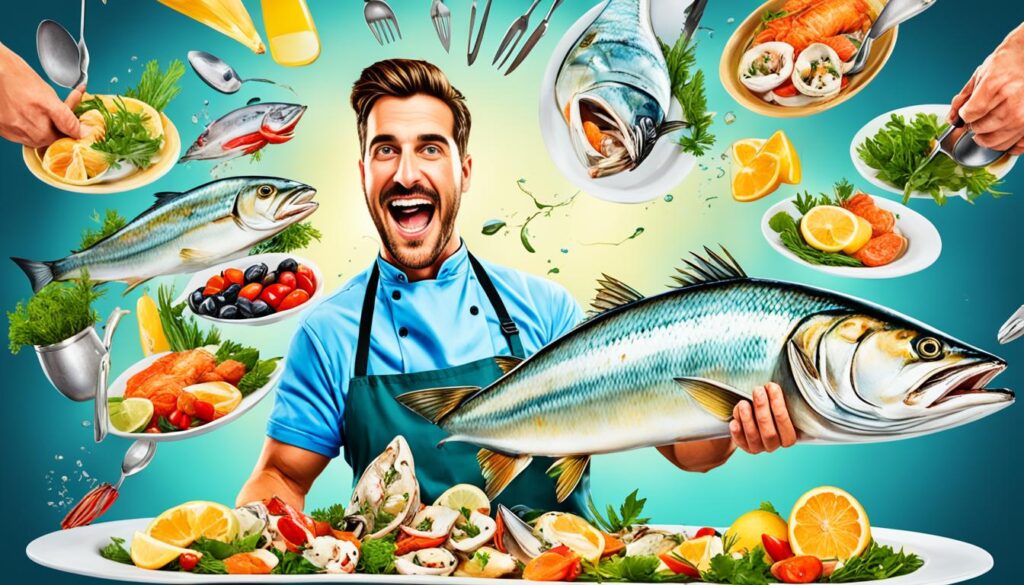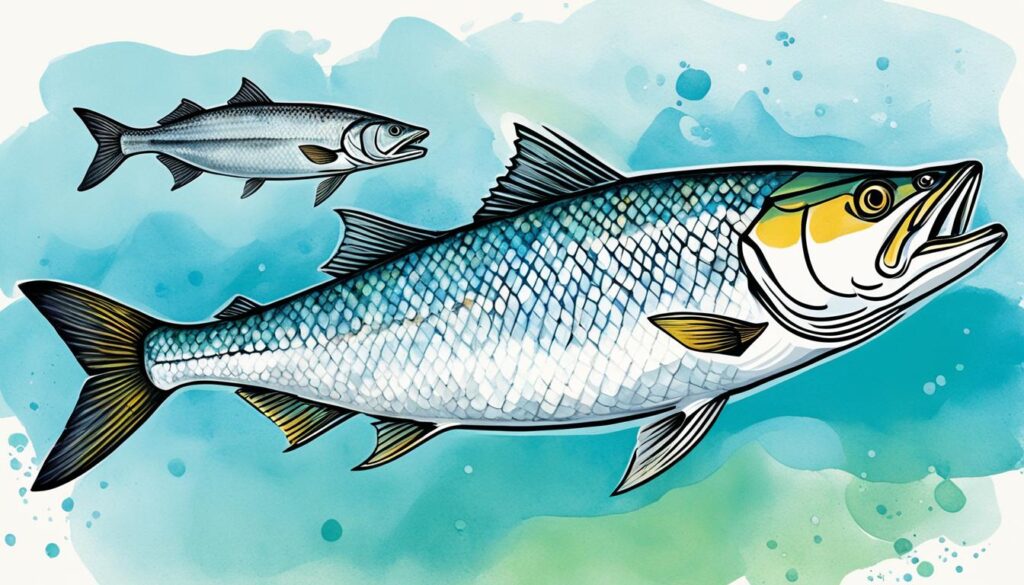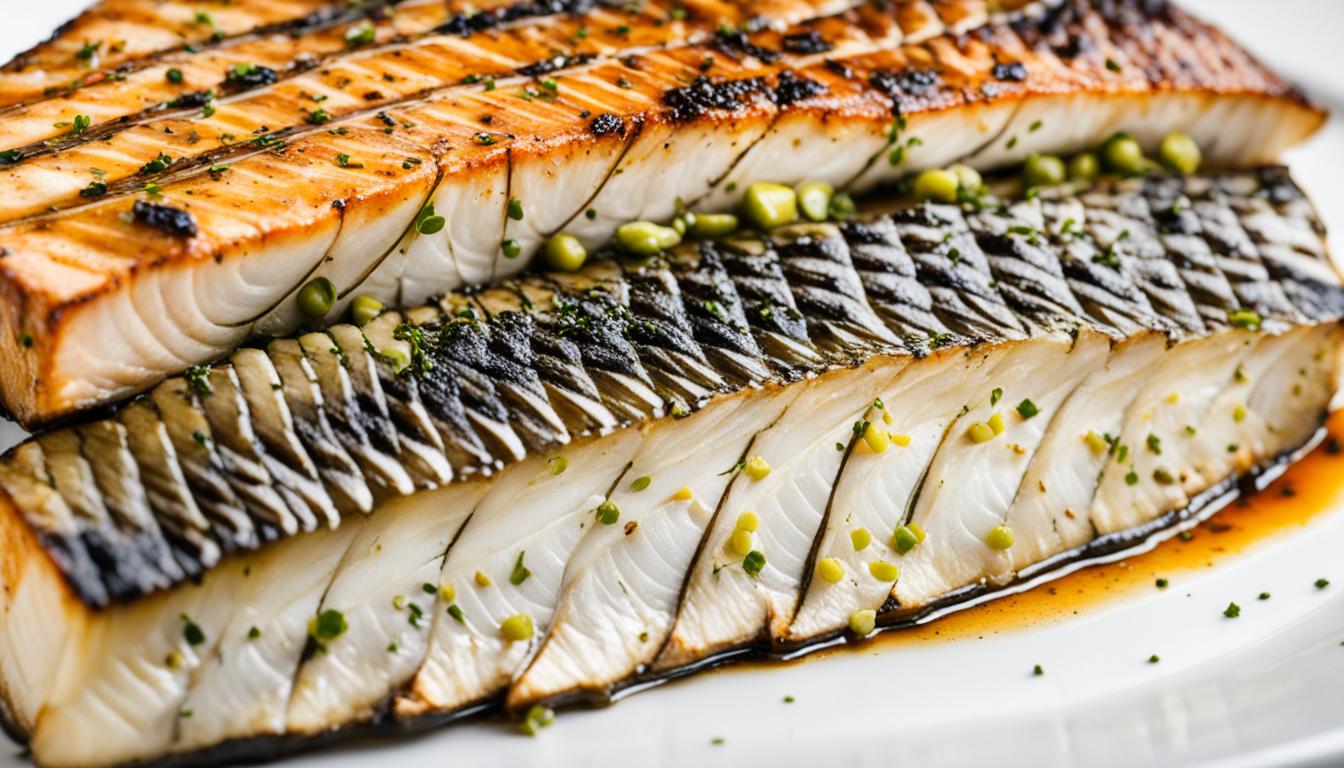This post contains affiliate links.
When an angler feels a tug on their line and the water explodes, excitement builds. They might be hooking a tarpon. These giants of the sea, shining in their swift moves, are not just any catch. They fill fishermen with stories of awe. But one question remains—can you eat tarpon? Picture catching this massive fish, its body glittering like treasure. Will it end up as a trophy or in a cooking pot? The truth is, catching a tarpon is a big deal. But eating one doesn’t quite match up to the thrill of catching it1.
Eating tarpon is more about the challenge than taste. It tells us it’s rare to find tarpon in stores because it’s tough to prepare. The meat requires lots of spices to handle its strong smell. Is it edible? Yes, but it’s more treasured for the sport than the taste. You won’t find tarpon on restaurant menus often. This tells us all we need to know1.
Key Takeaways
- Tarpon are more associated with sport fishing than as a food source1.
- The distinctive taste and texture of tarpon meat are an acquired appeal1.
- Techniques to prepare and cook tarpon are specialized and not common knowledge1.
- Eating tarpon fish might involve fish cakes with robust spices to mitigate its intense aroma1.
- The sport of catching tarpon often overshadow its potential edibility1.
- Size and strength of tarpons make them a storied catch, with or without their appearance on dinner plates1.
Debunking the Myths: Is Tarpon Really Edible?
Is it possible to eat tarpon? This question pops up among eager fishermen and food lovers. The mystery of tarpon has always sparked interest. Yet, a closer look tells us it’s not as appealing as we might think.
Tarpon tales are common among fishermen, but not on dinner menus. So, let’s learn why these fish don’t show up in our meals.
Historical Perspective on Eating Tarpon
In history, tarpon were rarely desired for meals. The hard work needed to prepare them turned many cooks away. Also, tarpon meat smells pretty bad. Most fishermen agree tarpon are better for sport than food.
Understanding Tarpon’s Physical Characteristics and Its Impact on Edibility
Talking about cooking tarpon brings us to its complex bones. Trying to find good meat in a tarpon? It’s tough. That’s why we keep tarpon as stories and trophies, not food.
Can You Eat Tarpon and Why It’s Not Commonly Found on Menus

The majestic tarpon is a unique creature of the sea. Its nutritional value remains a mystery, overshadowed by its size. The Texas record tarpon weighed 229 pounds and was caught in 20172. Though impressive, this does not make tarpon a popular choice for eating. Its many bones and strong smell make it a tough sell for chefs.
Tarpon are also elusive in their habits, making them hard to catch and study. Their mysterious growth and spawning patterns2 add to the challenge. This makes understanding their true value in nutrition quite a task.
Adult tarpon prefer the open waters of the Gulf, often traveling over 2,000 miles. They can dive deeper than 400 feet3, which adds to the rarity of their meat on dinner plates. While young tarpon can live in less ideal waters3, this does not increase their appeal in the kitchen. In Texas, catching tarpon is more about sport than culinary potential2.
The tarpon population is facing challenges, like overfishing and habitat loss2. While some might wonder about the taste of tarpon, conservationists focus on saving them. This focus helps keep tarpon out of kitchens and in the wild. They continue to inspire stories of the sea, beyond the reach of seafood markets.
Comparing Tarpon to Other Fish: A Culinary Standpoint
Tarpon isn’t the top choice for flavor and texture in the sea. It faces tough competition from other fish when we think about cooking and tasty dishes. Our fish friend doesn’t easily win in the taste tests.

Weighing in on taste and texture, tarpon on our plates seems unlikely. Its meat is tough and oily, not what most prefer. It doesn’t have the savory taste that gourmet seafood is known for.
Taste and Texture: Why Tarpon Doesn’t Measure Up
Tarpon’s meat is too firm and oily to match finer fish flavors. Chefs have tried creating tarpon dishes but usually choose other fish. They find other fish fit better with their recipes.
The Fish Bones Dilemma: Navigating Tarpon’s Challenging Anatomy
If the taste doesn’t turn you away, the bones might. Prepping a tarpon is like running an obstacle course because of its bones. The many sharp bones make filleting this fish a big challenge.
| Fish Type | Texture | Taste | Bone Structure | Culinary Versatility |
|---|---|---|---|---|
| Tarpon | Firm, Oily | Mild, Unremarkable | Many, Sharp | Low |
| Salmon | Flaky, Tender | Rich, Buttery | Manageable Pin Bones | High |
| Sea Bass | Moist, Dense | Delicate, Sweet | Few, Large | High |
| Halibut | Meaty, Flaky | Clean, Mild | Few, Easy to navigate | High |
In taste and ease of cooking, tarpon often doesn’t measure up. It’s outshined by other fish that chefs prefer to use. Even though we can be creative, tarpon is a rare choice among many better options.
Tarpon in Fishing and Cultural Significance
The majestic tarpon earns its acclaim not for cooking, but for its cultural and fishing prestige. Alabama honors it as the State Saltwater Fish, highlighting the challenging duel anglers endure with the “Silver King.” The value of a tarpon lies in the thrill of the catch, rather than potential dishes4.
15.3% of tarpon fall prey to predators during thrilling encounters with anglers. This underlines the dangers these fish navigate. Tarpon’s tenacity in the face of both predators and fishermen draws admiration. Given its “vulnerable” status, the focus is on protecting both tarpon and their predators like the endangered hammerhead shark4.
In Cuba’s Jardines de la Reina, commercial fishing is banned, creating a haven for tarpon. These fish, averaging 75 to 85 pounds, thrive unthreatened5. This initiative reflects a commitment to conserving tarpon, celebrating their beauty over taste5.
The tarpon’s story extends beyond Cuba, highlighting their global appeal in sport fishing. Florida and Virginia promote catch-and-release practices. Such regulations embody the belief that tarpon are a treasure to release, not keep6. The record tarpon, weighing 193 pounds in North Carolina, showcases the impressive size of these fish. They are to be admired and released, preserving their legacy for future anglers6.
Conservationists aim not to collect recipes but to secure tarpon’s awe-inspiring presence for the future. The culture of tarpon fishing celebrates respect, conservation, and admiration for nature. These principles guide efforts to ensure the tarpon remain a part of the fishing world, beyond mere flavor456.
Conclusion
When we think about eating tarpon, the answer is: yes, you can. But it’s like asking if you can use a swordfish as a pool noodle. It’s possible but not really practical. The Atlantic tarpon is a huge fish, reaching lengths of 4-8 feet. It’s too big for most dinner plates and challenges even the bravest chefs. This fish thrives in various water conditions, making it a mystery in the kitchen. It’s more of a ‘what if’ instead of ‘what’s for dinner.’
catching a tarpon requires special techniques. Anglers chase them with boats and use strong gear like a 30 lb braid and a Daiwa BG 4500 reel. But, releasing a tarpon feels more rewarding than eating it. It leaves us with tales of ‘the one that got away’ not ‘dinner stories.’
The tarpon is famous for its ability to reproduce, laying up to 12 million eggs at once. They put up a great fight in both cold and warm waters. Our love for fishing ethically means we’re more likely to release them than cook them. Let’s let tarpon live freely in the sea, where their true beauty shines. This keeps the spirit of the “Silver King” alive in anglers’ stories.
FAQ
Can you eat tarpon?
Why is tarpon not commonly found on menus?
What is the historical perspective on eating tarpon?
Are there any tarpon recipes available?
What impact does tarpon’s physical characteristics have on its edibility?
How does the taste and texture of tarpon compare to other fish?
What is the nutritional value of tarpon?
How does the fish bones dilemma affect tarpon cooking methods?
What is the cultural significance of tarpon?
Are there any tarpon meal ideas despite the challenges in cooking it?
Source Links
- https://www.americasrestaurant.com/tarpon-taste/
- https://tpwd.texas.gov/huntwild/wild/species/tarpon/
- https://www.saltwatersportsman.com/species/fish-species/science-behind-tarpon/
- https://www.sciencedaily.com/releases/2024/01/240122182837.htm
- https://www.nytimes.com/2013/03/17/sports/tarpon-are-a-favorite-of-anglers-in-part-for-the-fight-they-put-up.html
- https://coastalreview.org/2021/07/whats-on-the-line-atlantic-tarpon-the-silver-king/
This post contains affiliate links.

